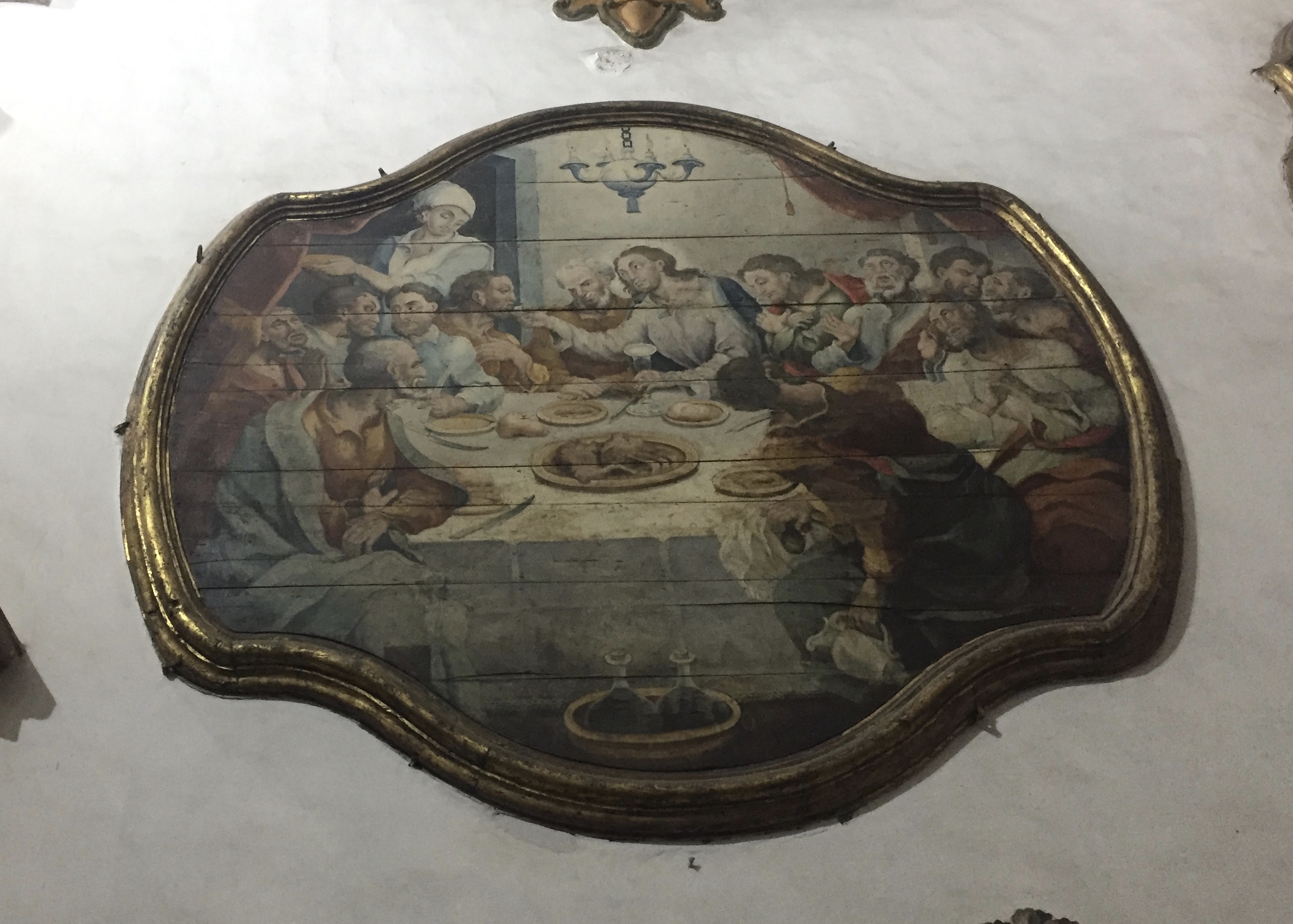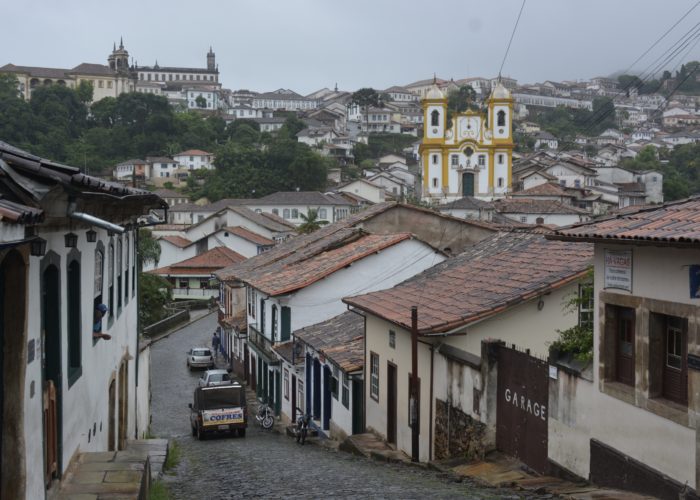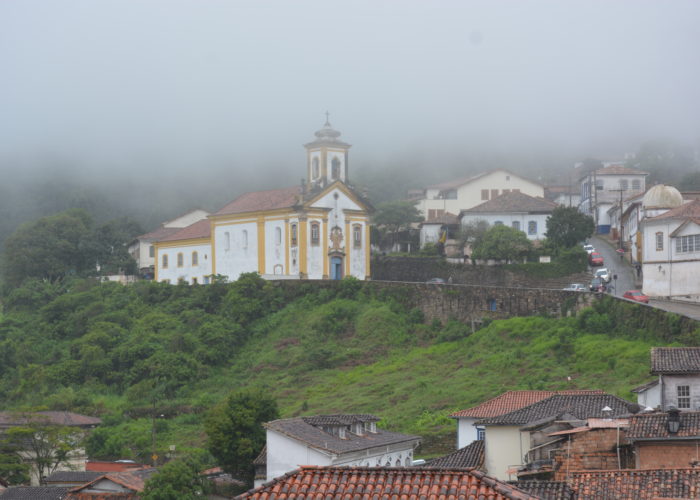After driving more than 800 kilometres from Brasilia, we arrived at Ouro Preto, a colonial mining town in the heart of Minas Gerais State. Ouro Preto, meaning “Black Gold,” was once one of Brazil’s wealthiest towns, thanks to the region’s extensive gold mines. This UNESCO World Heritage site has a population of approximately 75,000 and is famous for its baroque architecture and churches, which bear witness to the town’s prosperity during the 18th century.
Geography & Climate
Ouro Preto is situated in the Serra do Espinhaço mountains, at an elevation of 1,180 metres (3,870 feet). The town’s rugged terrain is characterised by steep cobbled streets and rolling hills, with rich deposits of gold and other minerals scattered throughout the area. The region has a tropical altitude climate, meaning Ouro Preto experiences cooler temperatures compared to Brazil’s coastal regions, and it has distinct wet and dry seasons. We visited during the rainy season, and it felt like the streets were rivers with the constant rainfall.

History & Economy
Founded in 1711 during Brazil’s gold rush, Ouro Preto was at the centre of the Minas Gerais gold boom in the 18th century. The town quickly became a symbol of colonial wealth and power. It was also one of the first places in Brazil where slavery was used extensively in mining, with tens of thousands of slaves working in harsh conditions. Aleijadinho, the renowned sculptor and architect, left a deep legacy in Ouro Preto with his religious sculptures, often subtly critiquing the institution of slavery.
While the gold mines within the town are no longer operational, mining remains a major industry in the surrounding area, and the town has transformed into a tourist and academic hub, owing to its preservation as a UNESCO site. The Federal University of Ouro Preto (Universidade Federal de Ouro Preto, UFOP) plays an important role in keeping the town vibrant and populated.

Principal Sites
Igreja de São Francisco de Assis (Church of St. Francis of Assisi)
One of the most important baroque churches in Brazil, São Francisco de Assis dates back to 1766 and was designed by Aleijadinho, who also contributed a number of intricate sculptures that add to its artistic grandeur. The exterior of the church showcases Aleijadinho’s sculptural work—notably the ornate Rococo façade and the carved stone reliefs on the front, including depictions of St. Francis receiving the stigmata. The church’s interior is a further testament to Aleijadinho’s mastery, particularly in the main altar, where his sculptures of saints and angels are imbued with realism and emotion.

In addition to the stunning sculptures, the church’s ceiling is an artistic masterpiece, featuring a vivid painting of the Assumption of the Virgin Mary, created by Manuel da Costa Ataíde, another iconic figure in colonial Brazilian art. The swirling, dynamic scene of the Virgin Mary ascending into heaven is particularly noted for its blue hues, which give the illusion of depth, and the richly painted angels and cherubs that float through the celestial scene.
Igreja de Nossa Senhora do Pilar (Church of Our Lady of the Pillar)
Built in 1733, Nossa Senhora do Pilar is one of the most opulent baroque churches in Ouro Preto. Its altar is a prime example of Rococo excess, with every surface gleaming with gold leaf. The central altar features elaborate wood carvings, adorned with gold, creating a striking contrast with the otherwise muted tones of the surrounding nave. The church also houses an impressive collection of Rococo paintings depicting various biblical scenes, which complement the architectural grandeur. The nave’s decoration is extravagant, with balconies in the upper levels and intricately carved details, and the church’s rich ornamentation reflects the prosperity brought by the gold rush.

Mina Jeje
A visit to Mina Jeje allows visitors to descend into one of the town’s old gold mines. The cramped tunnels give an insight into the brutal conditions slaves worked in, and it serves as a sombre reminder of the town’s history of exploitation.

Casa dos Contos (House of Tales)
This former colonial house is now a museum documenting the history of slavery in Ouro Preto. It provides a fascinating and essential look into the darker chapters of the town’s past, offering a counter-narrative to its grand baroque architecture.

Escola de Minas
Housed in the former Governor’s Palace, this school forms part of the Federal University and contains an impressive collection of minerals from Minas Gerais and around the world. It’s a fascinating stop for those interested in geology and mining history.
Aleijadinho
Aleijadinho, born Antônio Francisco Lisboa, was a master sculptor and architect whose work is spread throughout Minas Gerais. Despite suffering from leprosy and losing his fingers, Aleijadinho continued to create masterpieces like the 12 prophets at the Sanctuary of Bom Jesus do Matosinhos in Congonhas. His story is a testament to resilience, and his work continues to stand as a symbol of Brazil’s baroque legacy.

Environment
Ouro Preto’s mountainous terrain and abundant rainfall result in lush, fertile surroundings that help maintain the town’s greenery. The environment is largely shaped by the town’s location in the Serra do Espinhaço, part of the Brazilian Highlands, making it cooler than Brazil’s coastal cities. The heavy rainfall helps sustain agriculture in Minas Gerais, but also leads to concerns about soil erosion, particularly on the steep slopes of the town. The preservation of the town’s historic buildings, despite these environmental challenges, is a testament to Brazil’s commitment to safeguarding its cultural heritage.
Final Thoughts
Ouro Preto’s history is a mixture of wealth, artistic brilliance, and human exploitation. Its importance in Brazilian history is reflected in its architecture, its role in the gold rush, and its status as a UNESCO site. The legacy of figures like Aleijadinho and the striking baroque churches make it one of Brazil’s most culturally rich destinations.
Date: 19/11/2018 to 21/11/2018










